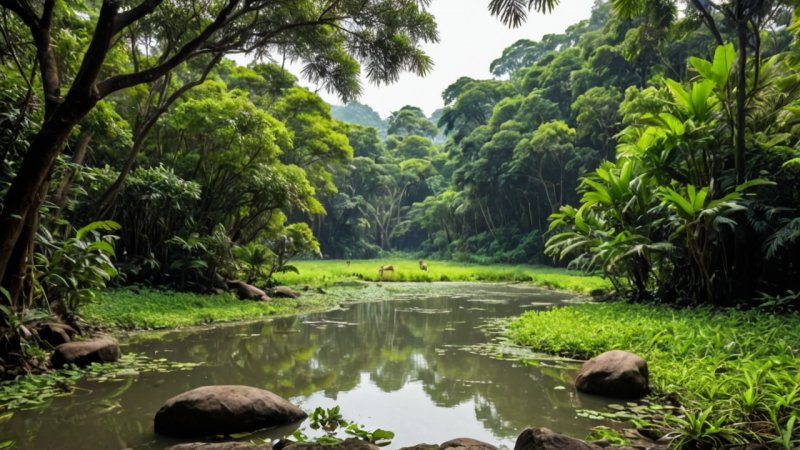Introduction
Asia is home to a plethora of unique wildlife sanctuaries, each offering a chance to witness some of the world's most incredible species in their natural habitats. From lush jungles to arid deserts, these sanctuaries not only protect endangered species but also provide visitors with unforgettable experiences. Below are some frequently asked questions about these remarkable destinations.
What are some of the best wildlife sanctuaries to visit in Asia?
There are numerous wildlife sanctuaries across Asia, but some of the most notable include:
- Jim Corbett National Park (India) - Renowned for its Bengal tigers.
- Kanha National Park (India) - Famous for its diverse flora and fauna.
- Yala National Park (Sri Lanka) - Known for its leopard population.
- Borneo Rainforest (Malaysia) - Home to orangutans and unique biodiversity.
- Komodo National Park (Indonesia) - Famous for the Komodo dragon.
When is the best time to visit these sanctuaries?
The best time to visit wildlife sanctuaries in Asia generally varies by region:
- India: October to March is ideal for cooler weather and better wildlife sightings.
- Sri Lanka: December to March is good for national parks in the south, while April to September is better for the north.
- Malaysia: The dry season from March to October is the best time for Borneo.
- Indonesia: April to October is the dry season, perfect for visiting Komodo National Park.
How can I get to these wildlife sanctuaries?
Accessing wildlife sanctuaries can differ based on their location:
- Cities: Most sanctuaries are located near major cities. For example, Jim Corbett is accessible from Delhi.
- Transport: Options include private taxis, buses, and, in some cases, domestic flights.
- Guided Tours: Many travelers prefer to book guided tours that include transportation and accommodation.
What should I pack for a trip to a wildlife sanctuary?
When visiting a wildlife sanctuary, it's essential to pack wisely:
- Clothing: Light, breathable clothing suitable for the climate, and layers for cooler evenings.
- Footwear: Comfortable walking shoes or hiking boots.
- Accessories: Binoculars, a camera, sunscreen, insect repellent, and a reusable water bottle.
- Health Kit: Basic first aid supplies and any personal medications.
Are there any ethical considerations when visiting wildlife sanctuaries?
Absolutely! Here are some ethical considerations:
- Respect Wildlife: Maintain a safe distance from animals and do not feed them.
- Follow Guidelines: Adhere to rules set by the sanctuary to protect both wildlife and yourself.
- Environmental Responsibility: Avoid littering and use eco-friendly products.
- Support Conservation: Choose sanctuaries that prioritize conservation efforts and ethical tourism practices.
Can I volunteer at wildlife sanctuaries in Asia?
Yes, many wildlife sanctuaries in Asia offer volunteer programs. These programs often include:
- Wildlife Rehabilitation: Assisting in the care and rehabilitation of injured animals.
- Conservation Projects: Participating in research and conservation work.
- Community Engagement: Working with local communities to promote sustainable practices.
What unique experiences can I expect at these sanctuaries?
Visitors to wildlife sanctuaries can enjoy various unique experiences, such as:
- Guided Safaris: Explore the sanctuary with trained guides who share their knowledge.
- Wildlife Tracking: Participate in tracking endangered species in their natural habitats.
- Photography Workshops: Attend workshops focused on wildlife photography.
- Night Safaris: Experience the sanctuary at night to see nocturnal animals.
Conclusion
Asia's wildlife sanctuaries offer a treasure trove of unique experiences and opportunities to connect with nature. By planning your visit thoughtfully and respecting the environment, you can enjoy these remarkable places while supporting conservation efforts. Whether you're a wildlife enthusiast or simply seeking adventure, these sanctuaries promise memories that will last a lifetime.






